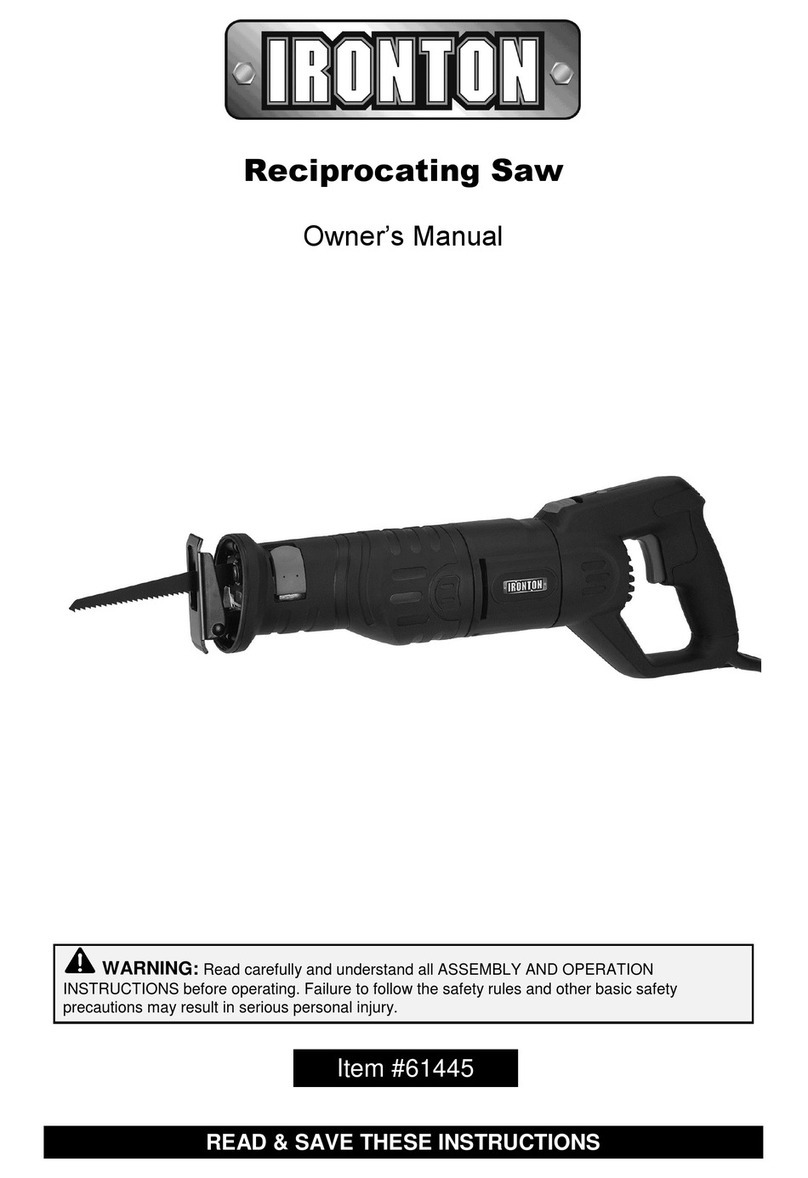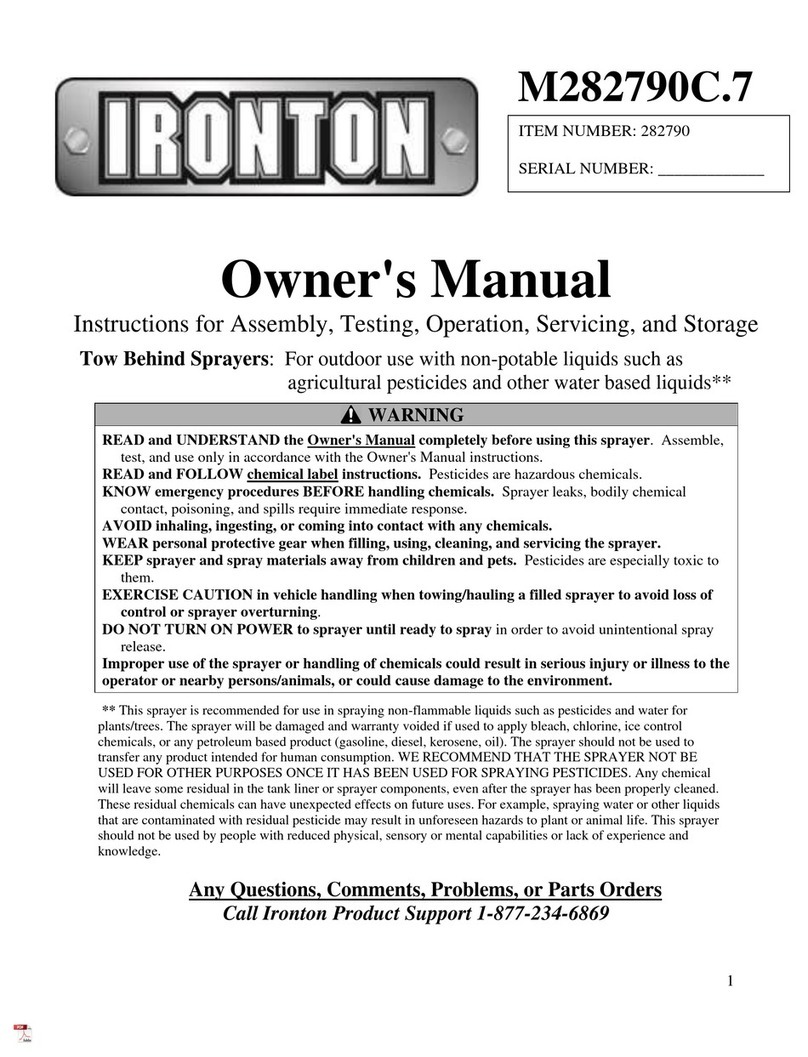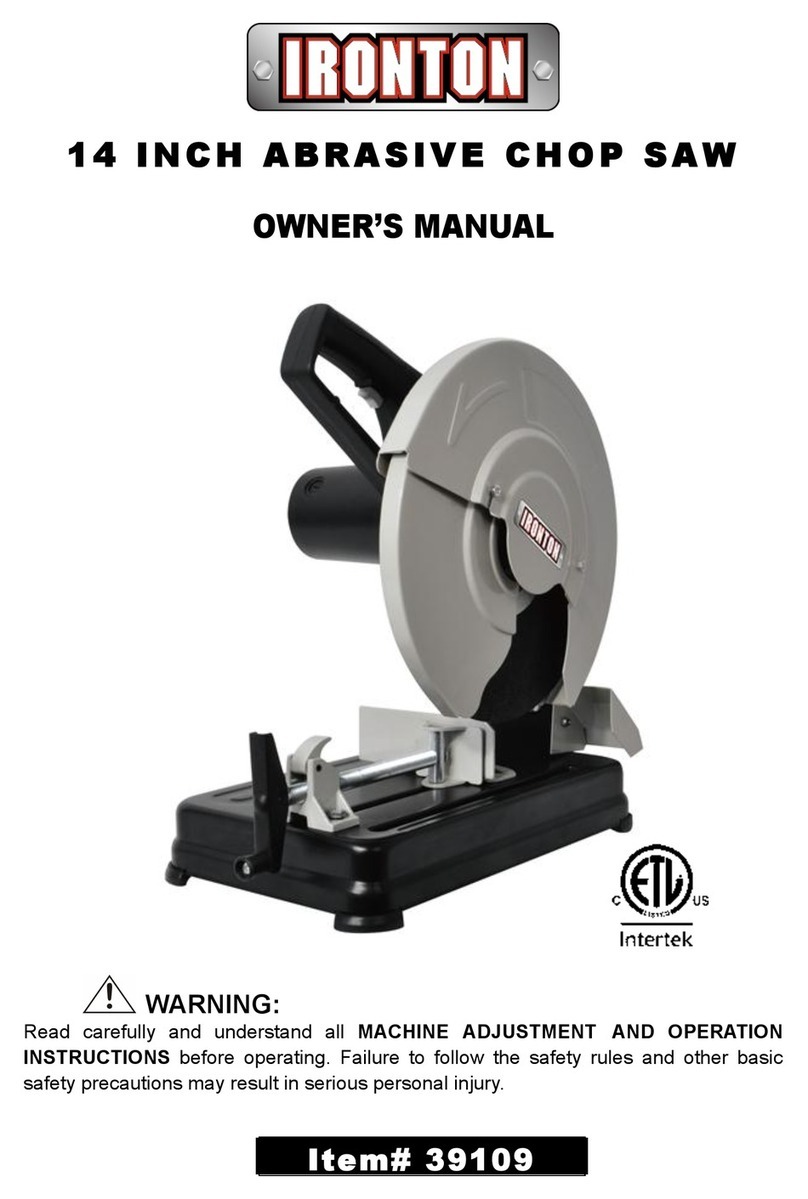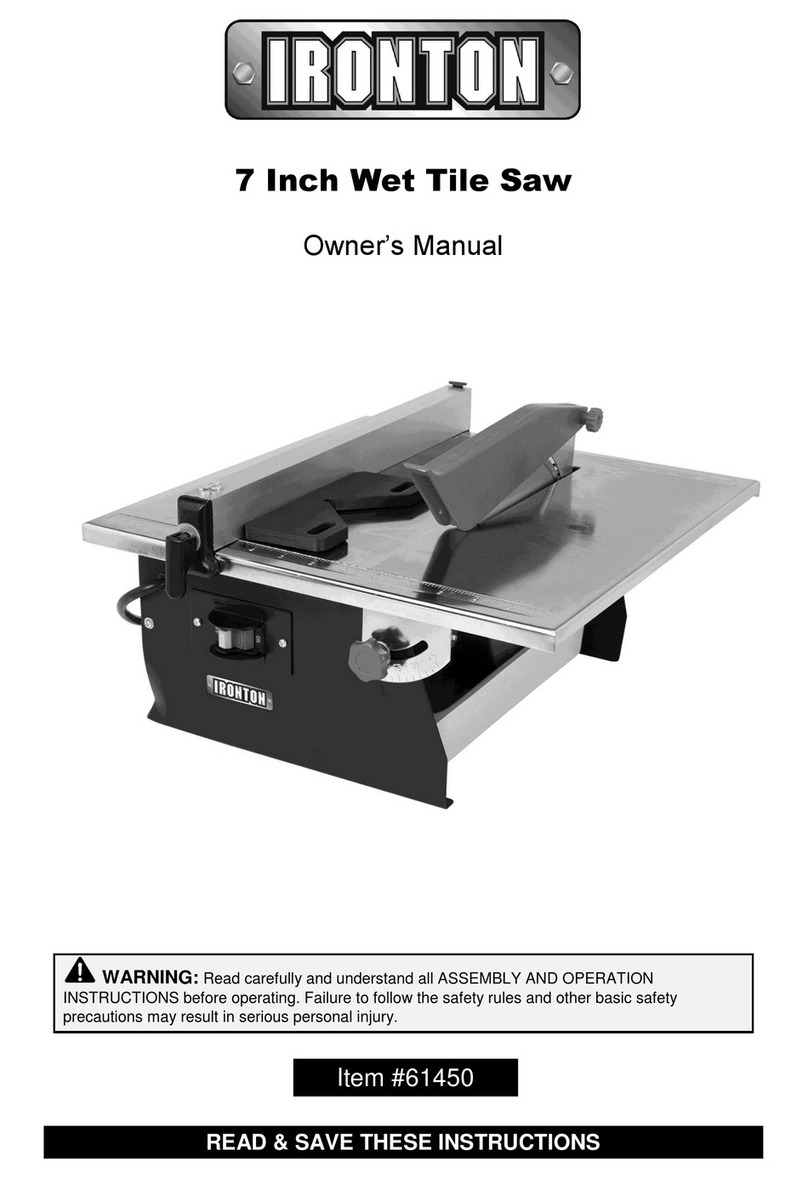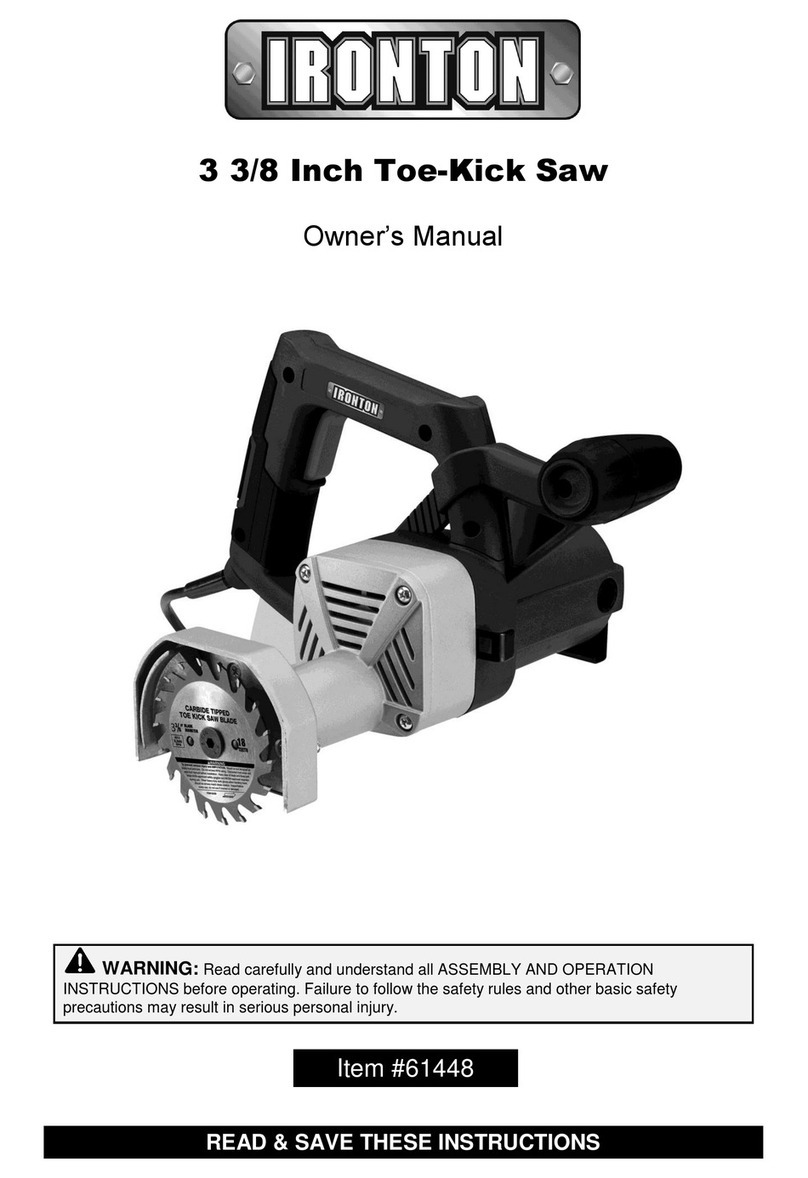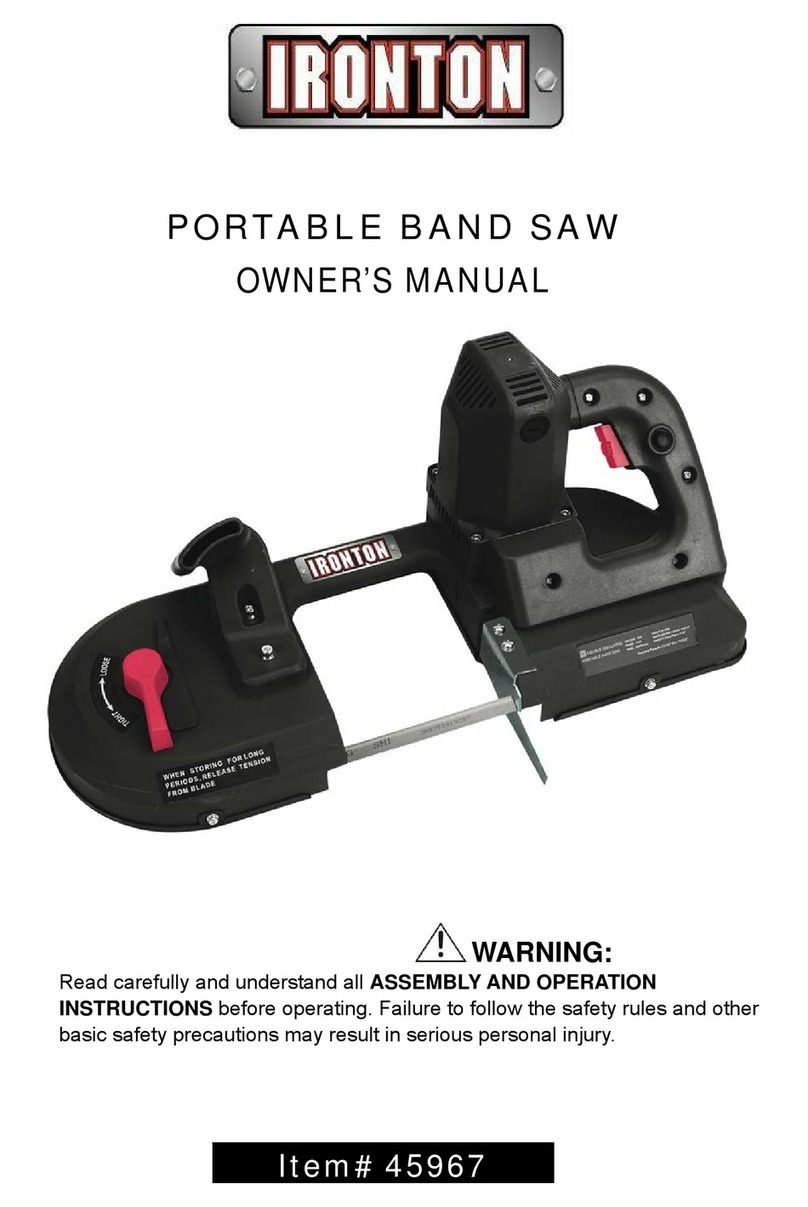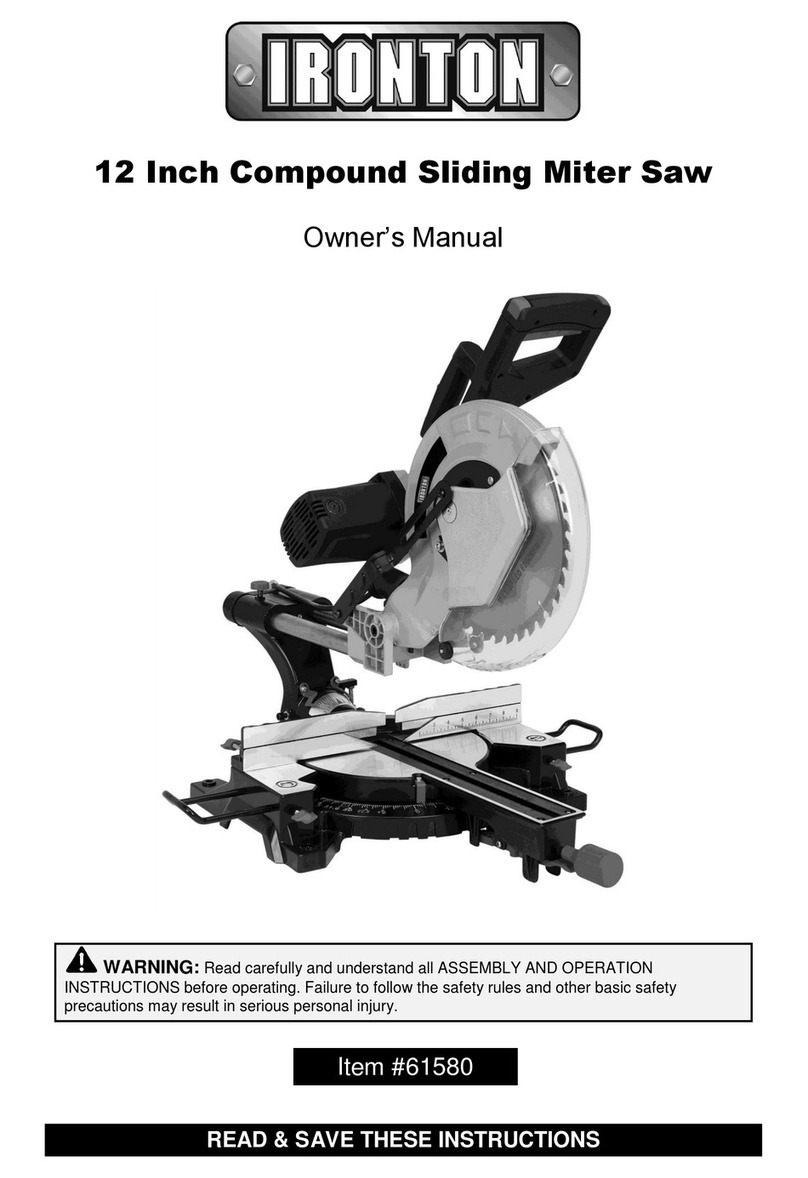If saw is accidentally dropped, lower guard may be bent. Raise the lower guard with the
Retracting Lever and make sure it moves freely and does not touch the blade or any other part, in
all angles and depths of cut. To check lower guard, open lower guard by hand, then release and
watch guard closure. Also check to see that Retracting Lever does not touch tool housing.
Leaving blade exposed is VERY DANGEROUS and can lead to serious personal injury
.
•
Check the operation and condition of the lower guard spring
.
If the guard and the spring are
not operating properly, they must be serviced before use. Lower guard may operate sluggishly
due to damaged parts, gummy deposits, or a buildup of debris
.
•
Lower guard should be retracted manually only for special cuts such
as
“Pocket Cuts” and
“Compound Cuts.” Raise lower guard by Retracting Lever. As soon as blade enters the material,
lower guard must be released. For all other sawing, the lower guard should operate automatically.
•
Always observe that the lower guard is covering the blade
before placing saw down on
bench or floor. An unprotected, coasting blade will cause the saw to walk backwards, cutting
whatever is in its path. Be aware of the time it takes for the blade to stop after switch is released
.
•
NEVER hold piece being cut in your hands or across your leg
.
It is important to support the
work properly to minimize body exposure, blade binding, or loss of control.
•
When ripping, always use a rip fence or straight edge guide
.
This improves the accuracy of
cut and reduces the chance for blade binding.
•
Always use blades with correct size
and shape (diamond vs. round) arbor holes. Blades that
do not match the mounting hardware of the saw will run eccentrically, causing loss of control
.
•
Never use damaged or incorrect blade washers or bolts
.
The blade washers and bolt were
specially designed for your saw, for optimum performance and safety of operation.
•
Causes and Operator Prevention of Kickback
:
Kickback is a sudden reaction to a pinched, bound or misaligned saw blade, causing an
uncontrolled saw to lift up and out of the work piece toward the operator.
oWhen the blade is pinched or bound tightly by the kerf closing down, the blade stalls and the
motor reaction drives the unit rapidly back toward the operator.
oIf the blade becomes twisted or misaligned in the cut, the teeth at the back edge of the blade
can dig into the top surface of the wood causing the blade to climb out of the kerf and jump
back toward the operator.
o
Kickback is the result of tool misuse and/or incorrect operating procedures of conditions and
can be avoided by taking proper precautions as given below:
!Maintain a firm grip on the saw and position your body and arm in a way that allows you to
resist KICKBACK forces. KICKBACK forces can be controlled by the operator, if proper
precautions are taken.
!When blade is binding, or when interrupting a cut for any reason, release the trigger and
hold the saw motionless in the material until the blade comes to a complete stop. Never
